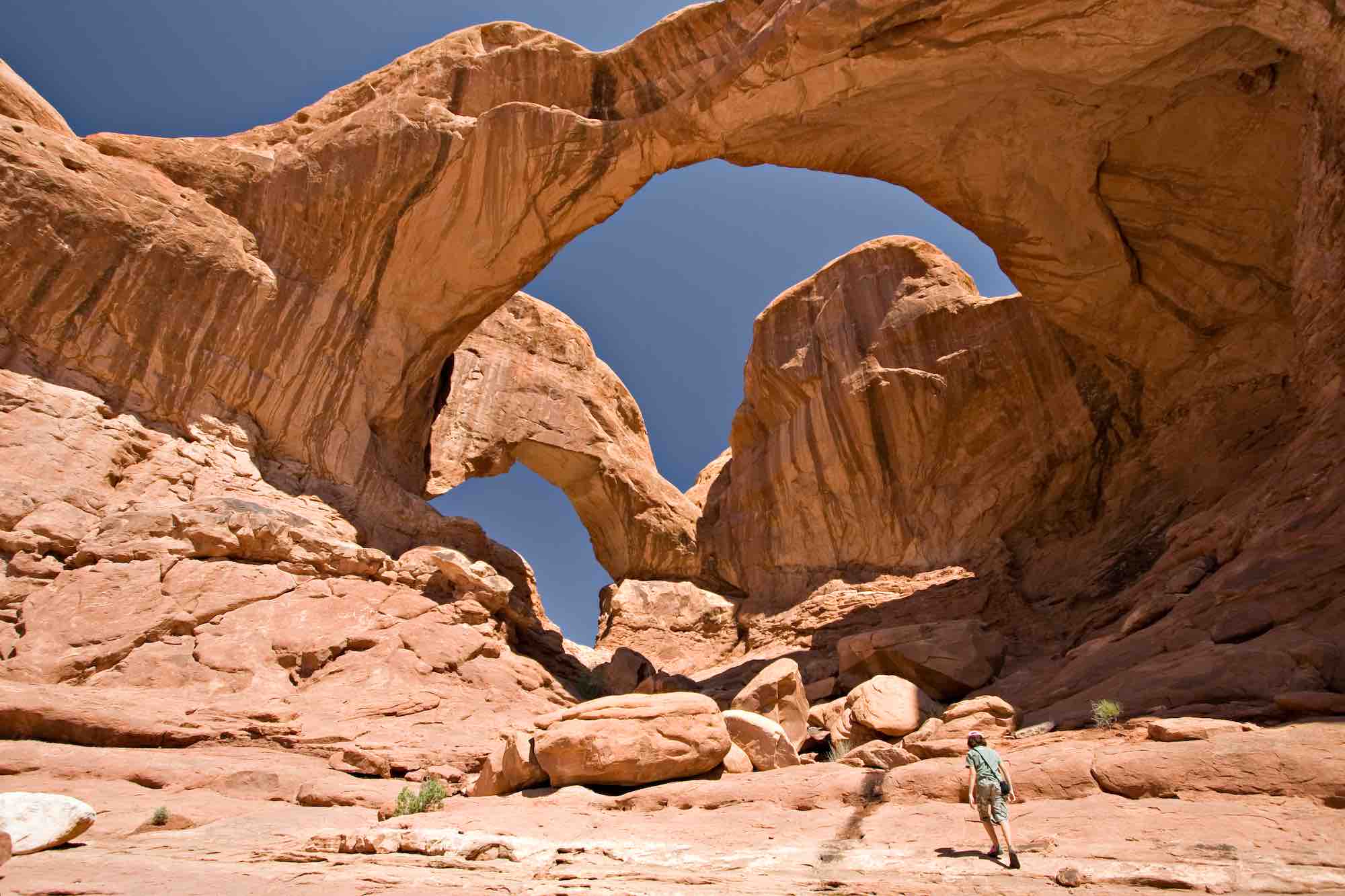at the University of Utah
Tourism plays critical role in rural Utah economy
Tourism is a big part of Utah’s economy, but a new analysis shows it’s even more essential to communities in rural Utah, where a large percentage of their income is tourist-based.
Analyst Jennifer Leaver discusses her findings in the podcast below. Click here for a press release about her findings as well.
Podcast Transcript:
Eccles School: Welcome to the Eccles School Podcast. I’m your host Sheena McFarland. We all know tourists love Utah, but research done by the Bureau of Economic and Business Research found that tourism has a particularly big influence on rural parts of the state. To discuss the findings is research analyst Jennifer Leaver. Thanks so much for joining me today.
Jennifer Leaver: Thank you, Sheena. I am happy to be here.
Eccles School: First, tell me about tourism’s impact in general in the state.
Jennifer Leaver: Well, in 2013, tourists and travelers spent a total of $7.5 billion in the state. As an export industry, tourism was actually the second-largest export behind primary metals in Utah in 2013, and one in 10 jobs can be attributed to the tourism industry in Utah. So it is a very significant part of our economy.
Eccles School: Absolutely sounds like it. And it sounds like the Wasatch Front dominates in terms of tourism sales, county sales, tax revenues and jobs. But tourism counts for a smaller percentage of urban Utah’s economy. That doesn’t seem to be the case with rural Utah, though.
Jennifer Leaver: Exactly, what this research brief shows is that in rural Utah, even though they are not generating as many sales and as much tax revenue and maybe supporting as many jobs as in urban Utah — in the four urban counties of Davis, Weber, Utah and Salt Lake County. They actually have a larger share of tourism generated sales, tourism-supported jobs and tourism-related tax revenues at the county level.
So we’re seeing that, one thing that came to light after doing some research on looking into this, was that the counties particularly in what I like to call Canyon Country — Garfield, Grant, Kane County, as well as down in Washington County — tourism is much more significant to their economy. They are not as diverse as in the urban areas and therefore, as gateway towns to the national parks, the national monuments, they rely heavily on tourism.
Eccles School: Sure. So when something like a federal shutdown occurs and national parks aren’t open, that seems to have a much more harmful impact to Utah’s rural economy right?
Jennifer Leaver: Absolutely. I think studies that were done through the government shutdown of 2013 showed that the gateway towns definitely lost a significant amount of tourist income and drop in sales, drop in tax revenue and it was quite significant. And so again, in 2014, we’re seeing again large increases in tourism in the rural counties back. So it just brought to light how important it is down near our national parks and monuments.
Eccles School: Great, so overall, what conclusions do you draw from this analysis?
Jennifer Leaver: Well, I would say that it is very important when policy makers are looking at for instance tax revenue. Sales tax revenue is very important and that’s how tourism contributes greatly to our state. And for example, if a policymaker was looking at some change in policy on let’s say the transient room tax or the accommodations tax that we have here, to keep in mind that it could — even though it may not be as significant to the urban areas — it may actually be quite significant to the rural towns. And so, it is just kind of something to look at and to consider when making policy decisions related to tourism.
Eccles School: Excellent. Well, is there anything else I should be asking or that you would like to talk about?
Jennifer Leaver: Well, I would just like to say that tourism seems to be on the rise in Utah looking at trends over the past 20 years and we are seeing upward trends in skiing over the last 5 to 10 years when compared back to the 1980s, ’90s, early 2000s. And we are also seeing jumps at the national park visitation levels which I think a large part has to do with the Office of Tourism’s Mighty Five advertising campaign, which highlights our five national parks. And ever since those ads have been running, I think it began in the spring of 2013 and as well as the spring of 2014 and 15, we’ve seen almost 14 percent increases in our national park visitation between 2013 and 2014. And you might say well, that’s because you’re comparing it to the year with the government shut down. However, if I look at 2012 and compare it to 2014, there is still 10 percent or more increases at the national parks. So I think it’s had a big impact.
The other thing is we’re looking at Chinese tourism and predicting — we’re seeing increases in Chinese tourism and are kind of keeping our eye on that because they are big contributors and maybe bigger players in this in the future. And also exploring South America, the Brazil market and Mexico market, I know the Office of Tourism is starting to take a look at those as well. So again, it’s just something that is very important to our state and is an easy product here to sell because we have so many amenities with skiing and the national parks and outer recreation.
Eccles School: Absolutely. Well thank you so very much for joining us, I really appreciate you taking the time.
Jennifer Leaver: OK. Thank you so much, Sheena.
Eccles School: This has been Sheena McFarland with the Eccles School Podcast.





